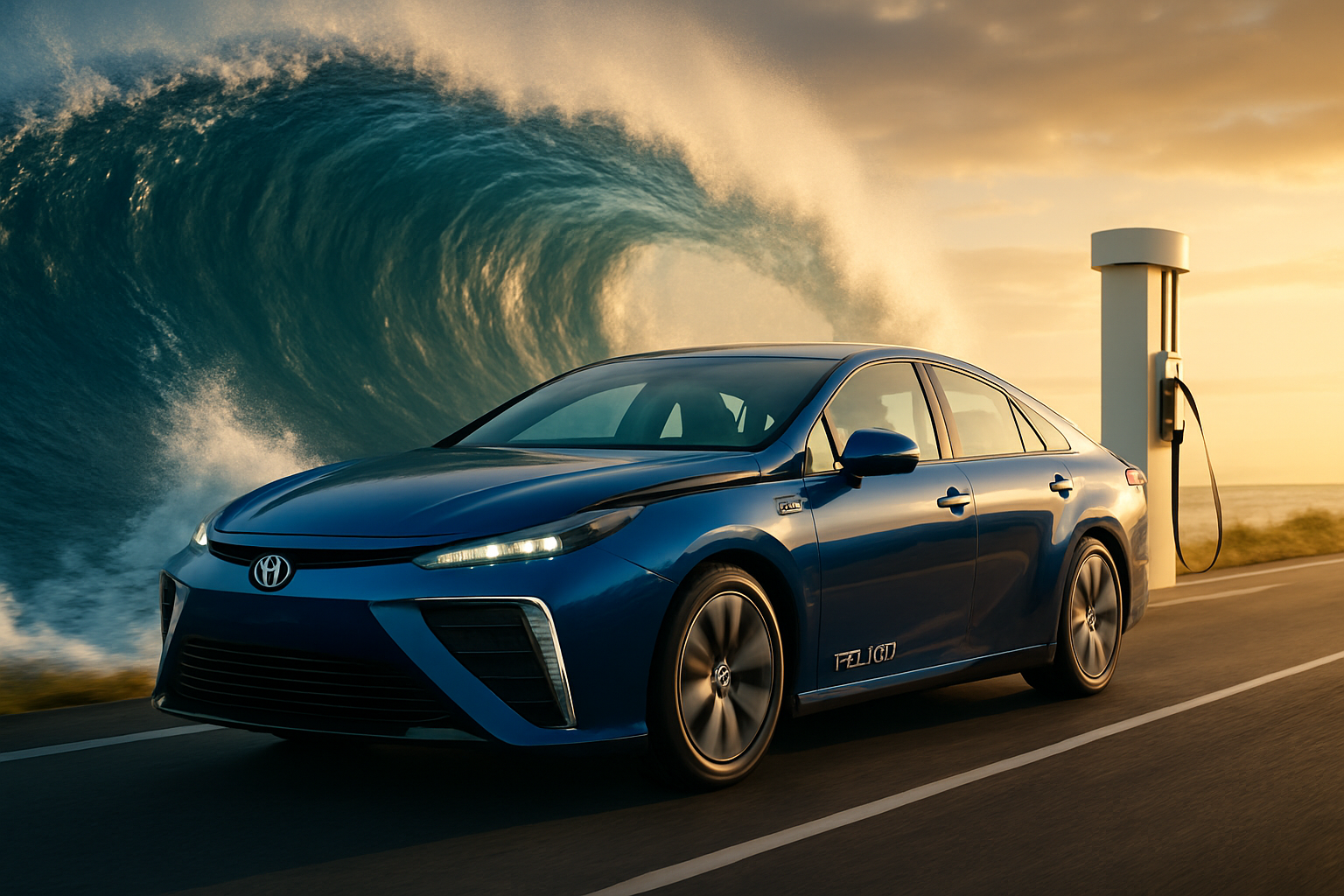Hydrogen-Powered Motorcycles: The Next Frontier in Two-Wheel Innovation
Imagine cruising down the highway on a sleek, powerful motorcycle that emits nothing but water vapor. The gentle hum of the engine belies its impressive performance, as you effortlessly accelerate past conventional gas-guzzlers. This isn't a scene from a science fiction movie; it's the promise of hydrogen-powered motorcycles, a technology that's rapidly gaining traction in the automotive world.

The Science Behind Hydrogen Power
At the heart of hydrogen-powered motorcycles lies the fuel cell, a device that converts hydrogen gas into electricity through an electrochemical reaction. This process, known as electrolysis, combines hydrogen with oxygen from the air to produce water and electricity. The electricity generated powers an electric motor, propelling the motorcycle forward with surprising efficiency and power.
Unlike traditional internal combustion engines, fuel cells produce zero harmful emissions, with water vapor being the only byproduct. This makes hydrogen motorcycles an attractive option for environmentally conscious riders who don’t want to compromise on performance or range.
Advantages Over Traditional Electric Motorcycles
While electric motorcycles have gained popularity in recent years, hydrogen-powered bikes offer several distinct advantages. First and foremost is the issue of range. Hydrogen motorcycles can be refueled in minutes, much like their gasoline counterparts, eliminating the long charging times associated with battery-electric vehicles.
Additionally, hydrogen fuel cells typically offer a longer range than battery-electric motorcycles, making them more suitable for long-distance riding. The energy density of hydrogen is significantly higher than that of lithium-ion batteries, allowing for greater power output and extended ride times between refueling stops.
Challenges and Hurdles
Despite the promise of hydrogen-powered motorcycles, several challenges must be overcome before widespread adoption becomes a reality. The most significant hurdle is the lack of hydrogen refueling infrastructure. Unlike gasoline stations, which are ubiquitous, hydrogen fueling stations are few and far between, limiting the practicality of hydrogen vehicles for many riders.
Another challenge is the cost of producing and storing hydrogen fuel. While hydrogen is the most abundant element in the universe, extracting and compressing it for use in vehicles is currently an expensive process. As technology improves and economies of scale come into play, these costs are expected to decrease, but for now, they remain a significant barrier to entry.
Pioneering Manufacturers and Prototypes
Several motorcycle manufacturers have recognized the potential of hydrogen power and are investing heavily in research and development. Japanese giant Suzuki has been at the forefront of this technology, unveiling its Burgman Fuel Cell Scooter concept as early as 2009. The company has since continued to refine its hydrogen-powered designs, with plans to bring a production model to market in the near future.
Other manufacturers, including Honda and Kawasaki, have also expressed interest in hydrogen technology, with concept bikes and prototypes making appearances at major motorcycle shows around the world. These early efforts demonstrate the industry’s commitment to exploring alternative fuel sources and pushing the boundaries of motorcycle engineering.
The Role of Racing in Development
As with many automotive innovations, racing has played a crucial role in advancing hydrogen motorcycle technology. The Isle of Man TT Zero, an electric motorcycle race held annually on the infamous Mountain Course, has seen hydrogen-powered bikes compete alongside their battery-electric counterparts. These high-performance machines serve as testbeds for new technologies and help to showcase the potential of hydrogen power in a demanding, real-world environment.
The lessons learned on the racetrack are invaluable for manufacturers as they work to develop road-going hydrogen motorcycles. Improvements in power delivery, fuel efficiency, and overall performance can be directly applied to consumer models, accelerating the pace of innovation and bringing hydrogen-powered bikes closer to mainstream adoption.
The Future of Two-Wheeled Transportation
As concerns about climate change and air pollution continue to grow, the need for cleaner transportation options becomes increasingly urgent. Hydrogen-powered motorcycles represent a promising solution that combines the thrill of riding with environmental responsibility. While challenges remain, the rapid pace of technological advancement in this field suggests that hydrogen bikes could become a common sight on our roads in the not-too-distant future.
The potential impact of this technology extends beyond personal transportation. Hydrogen-powered motorcycles could revolutionize urban delivery services, providing a clean and efficient alternative to traditional combustion-engine scooters and motorcycles. This shift could significantly reduce emissions in densely populated areas, improving air quality and public health.
As we look to the future of motorcycling, it’s clear that hydrogen power will play an increasingly important role. The combination of zero emissions, quick refueling times, and long-range capabilities make hydrogen-powered bikes an attractive option for riders and manufacturers alike. While there’s still work to be done in terms of infrastructure development and cost reduction, the foundations for a hydrogen-powered revolution in the motorcycle industry have been laid.
The journey from concept to reality for hydrogen-powered motorcycles is a testament to human ingenuity and the relentless pursuit of cleaner, more efficient transportation. As we stand on the cusp of this exciting new era in motorcycling, one thing is certain: the future of two-wheeled travel is looking cleaner, greener, and more thrilling than ever before.





